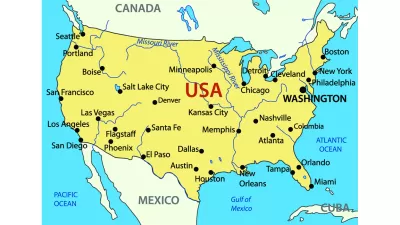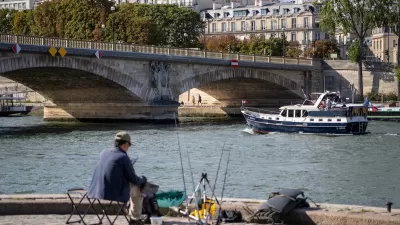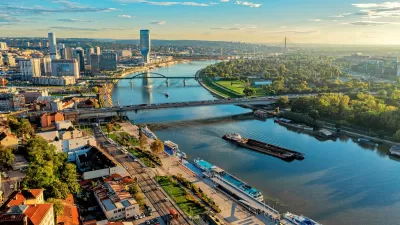Move over Panama Canal, there’s another waterway that connects one side of the continent to the other. These waters part ways in Wyoming.

Jesus Diaz shares knowledge of the geographic point of interest known as “Parting of the Waters,” found in the Teton Wilderness Area of the Bridger-Teton National Forest in Wyoming. There, a mountain stream called North Two Ocean Creek meets the Continental Divide and splits into two streams headed opposite directions. One of the streams becomes Atlantic Creek, flowing 3,488 miles east and then south and joining the Yellowstone, Missouri and Mississippi rivers—finally culminating in the Gulf of Mexico. The other stream becomes Pacific Creek, flowing 1,353 miles west and joining the Snake and Columbia rivers—eventually spilling into the Pacific Ocean.
The MyWyoming tourism site has more on the experience of standing one foot in the Pacific and one foot in the Atlantic.
In case you're curious for more waterway-related nomenclature, the streams flowing away from each other are called distributaries—Parting of the Waters just happens to occur at the Continental Divide. For another famous example, reference the Casiquiare River in South America, which flows away from the Orinoco River toward the Rio Negro, a tributary of the Amazon.
And Wyoming includes another place where distributaries split to eventually find very different bodies of water, according to the MyWyoming tourism site: “[at] Three Waters Mountain, near Union Pass, water wends its way to three different major bodies of water, the Gulf of California (the drop travels 1,300 miles), the Pacific (a 1,400-mile trip), and the Gulf of Mexico (3,000-miles distant).”
FULL STORY: This creek divides the US connecting the Atlantic and Pacific oceans

Americans May Be Stuck — But Why?
Americans are moving a lot less than they once did, and that is a problem. While Yoni Applebaum, in his highly-publicized article Stuck, gets the reasons badly wrong, it's still important to ask: why are we moving so much less than before?

Using Old Oil and Gas Wells for Green Energy Storage
Penn State researchers have found that repurposing abandoned oil and gas wells for geothermal-assisted compressed-air energy storage can boost efficiency, reduce environmental risks, and support clean energy and job transitions.

Placekeeping: Setting a New Precedent for City Planners
How a preservation-based approach to redevelopment and urban design can prevent displacement and honor legacy communities.

San Francisco’s Muni Ridership Grew in 2024
The system saw its highest ridership since before the Covid-19 pandemic, but faces a severe budget shortage in the coming year.

Colorado Lawmakers Move to Protect BRT Funding
In the face of potential federal funding cuts, CDOT leaders reasserted their commitment to planned bus rapid transit projects.

Safe Streets Funding in Jeopardy
The Trump administration is specifically targeting bike infrastructure and other road safety projects in its funding cuts.
Urban Design for Planners 1: Software Tools
This six-course series explores essential urban design concepts using open source software and equips planners with the tools they need to participate fully in the urban design process.
Planning for Universal Design
Learn the tools for implementing Universal Design in planning regulations.
Heyer Gruel & Associates PA
City of Moreno Valley
Institute for Housing and Urban Development Studies (IHS)
City of Grandview
Harvard GSD Executive Education
Salt Lake City
NYU Wagner Graduate School of Public Service
City of Cambridge, Maryland





























